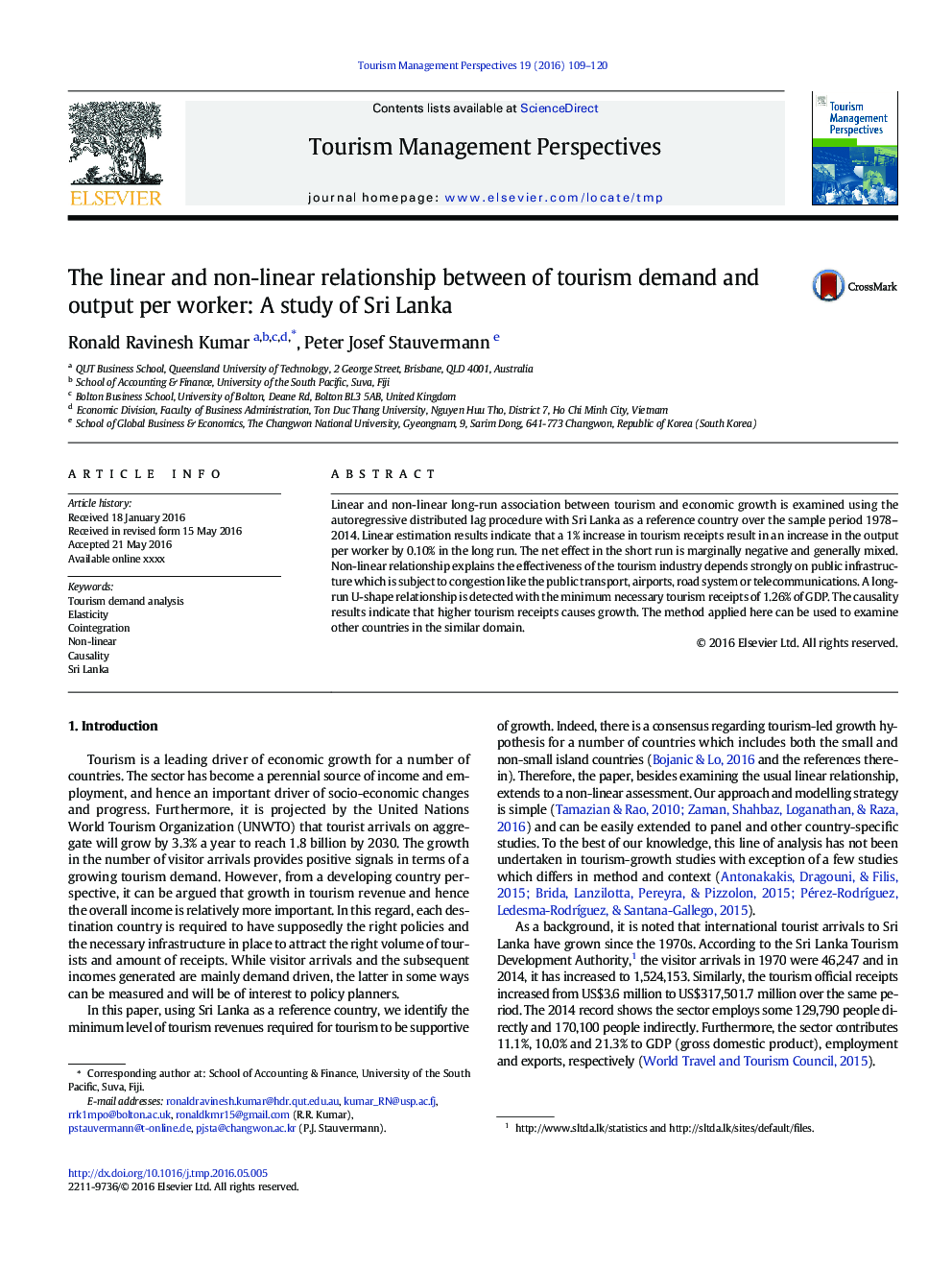| Article ID | Journal | Published Year | Pages | File Type |
|---|---|---|---|---|
| 10491086 | Tourism Management Perspectives | 2016 | 12 Pages |
Abstract
Linear and non-linear long-run association between tourism and economic growth is examined using the autoregressive distributed lag procedure with Sri Lanka as a reference country over the sample period 1978-2014. Linear estimation results indicate that a 1% increase in tourism receipts result in an increase in the output per worker by 0.10% in the long run. The net effect in the short run is marginally negative and generally mixed. Non-linear relationship explains the effectiveness of the tourism industry depends strongly on public infrastructure which is subject to congestion like the public transport, airports, road system or telecommunications. A long-run U-shape relationship is detected with the minimum necessary tourism receipts of 1.26% of GDP. The causality results indicate that higher tourism receipts causes growth. The method applied here can be used to examine other countries in the similar domain.
Related Topics
Social Sciences and Humanities
Business, Management and Accounting
Tourism, Leisure and Hospitality Management
Authors
Ronald Ravinesh Kumar, Peter Josef Stauvermann,
